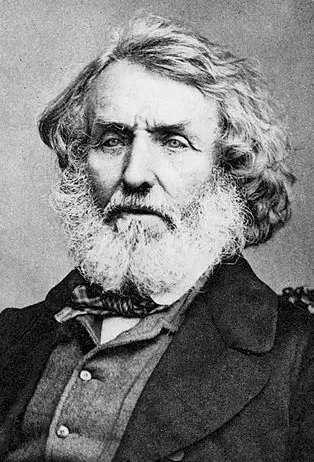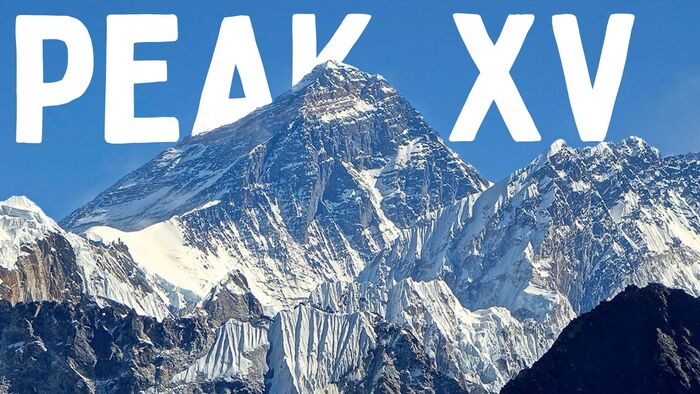Mount Everest got its name from Sir George Everest, who was a surveyor and a geographer in the 1800s. This majestic mountain resides between the borders of Nepal and Tibet, an autonomous region of China. The mountain is also known by its Tibetan name, Chomolungma, signifying the revered “Mother Goddess of the World.” While in Nepal, it goes by the name Sagarmatha, which means “Goddess of the Sky.”
How Did ”Everest” Get Its Name?

Mount Everest was named after Sir George Everest, who was a British surveyor and geographer who served as the Surveyor of India. George Everest played a big role in measuring the median arc from the southern part of India to Nepal.
George Everest had no direct connection with the mountain named after him. However, he played a pivotal role in the mountain’s history through his association with Andrew Scott Waugh and Radhanath Sikdar. Andrew Scott Waugh, appointed by George Everest, conducted the first formal observations of the mountain. Later, Radhanath Sikdar, working under Waugh’s guidance, calculated its height. Before its significance was fully realized, the mountain went by various names, including Peak “B” and later Peak XV.

In March 1856, Waugh wrote to the Royal Geographical Society, stating that the mountain was believed to be the highest in the world. He proposed that it be named after his predecessor, Sir George Everest, as there was no local name associated with it. While there were indeed native names used by the Nepalese and Tibetans, people residing further south in the Himalayas didn’t have a specific name for the peak.
Proposal to Change Everest’s Name sparked Debate
The proposal to name the mountain after George Everest sparked extensive debates among the Royal Geographical Society and other related organizations in the following decade. Various scholars of India put forth native names they deemed appropriate, such as Brian Houghton Hodgson’s suggestion of “Deva-dhunga” and Hermann Schlagintweit’s recommendation of “Gaurisankar.” Interestingly, George Everest himself objected to having his name used for the mountain. He believed that the natives of India would have difficulty pronouncing it, and it wouldn’t be easy to write in Hindi.
Nonetheless, in 1865, the Royal Geographical Society officially settled on “Mount Everest” as the name for the towering peak, commemorating George Everest’s contributions to the world of geography and exploration.
Local Names of Mount Everest

Known as Mount Everest today, the mountain also boasts local names given by the indigenous people who have long shared a close connection with it. These local names not only reflect the diverse cultures and histories of the areas but also add layers of meaning and reverence to the mountain’s grandeur.
What is the Chinese Name for Mount Everest?
In China, the mountain was originally known by its traditional Tibetan names, such as Qomolangma, Jomo Langma, or Chomolungma. On traditional Chinese maps, it appeared as Qomolangma until the early 18th century. Another name it was referred to in China was Shengmu Feng, meaning “the Holy Mother Peak.”
What is Nepali Name for Mount Everest?
In Nepal, the Mount Everest is known as Sagarmatha. This name is derived from the Nepali words “Sagar” and “Matha,” which translate to “head” and “sky.” Therefore, Sagarmatha is often interpreted as “Goddess of the sky”. This name is not only associated with the mountain but also appears in the names of places connected to it, such as the Sagarmatha National Park, which encompasses the Nepalese part of the mountain. The entire mountainous region in Nepal, including the Himalayas and Everest, is referred to as the Sagarmatha Zone.
Alternate names for Mount Everest
Additional names of Mount Everest that you didn’t know:
- Peak XV (Used in the British Empire’s Survey)
- Old Darjeeling name: “Deodungha”
- “Gauri Shankar” or “Gaurisankar” (This name is now used for a different peak about 30 miles away, but it was occasionally used for Mount Everest until about 1900.)
Who Was Sir George Everest?

Sir George Everest, (July 4th, 1790 – December 1st, 1866) was a distinguished British surveyor and geographer. He held the esteemed position of Surveyor General of India from 1830 to 1843. He had received his education at the Royal Military Academy based in Woolwich.
Subsequently, Everest journeyed to India, where he became involved in various geographical and cartographic endeavors. His exceptional skills and accomplishments led to his promotion as the Surveyor General of India, a distinguished title later succeeded by Andrew Scott Waugh.
Throughout his career, Everest earned numerous awards and honors. The Royal Geographical Society acknowledged his contributions by inducting him as a fellow, and in 1861, he was granted the prestigious title of Knight Bachelor. Furthermore, the Royal Astronomical Society bestowed a medal upon him in recognition of his outstanding work.
George Everest passed away in December 1866 at the age of 76. His final resting place is St. Andrew’s Church, located near Brighton.
Mispronouncing Mount Everest
An interesting fact is that the pronunciation of the mountain’s name, “Everest,” differs from that of the man it was named after. Mount Everest is commonly pronounced as “EVER-ist,” while Sir Everest’s name is pronounced as “EEv-rest.”
FAQs: How Did Everest Get It’s Name?
Below are the frequently asked questions on how mount everest got its name:
In 1865, the Royal Geographical Society officially designated the name “Mount Everest” following a proposal made by Andrew Waugh, the British Surveyor General of India. Interestingly, Sir George Everest, who held the same position before Waugh, had the mountain named after him.
The mountain was named after the British surveyor George Everest in 1856. The tale traces back to 1852 when Radhanath Sikhdar, a mathematician employed in the Great Trigonometrical Survey of India, stumbled upon what he believed to be the highest peak in the world.
Around 1852, Radhanath Sikhdar, serving as the Chief Computer of the Survey of India, made a significant discovery. According to one account, he was the one who first determined that Mount Everest is probably the highest mountain not only in the Himalayas but likely in the entire world.
During the 1850s, the Himalayan peak, which later gained worldwide recognition as Mount Everest, was initially referred to as “Peak 15” or “Peak XV” in geographic survey terms.
